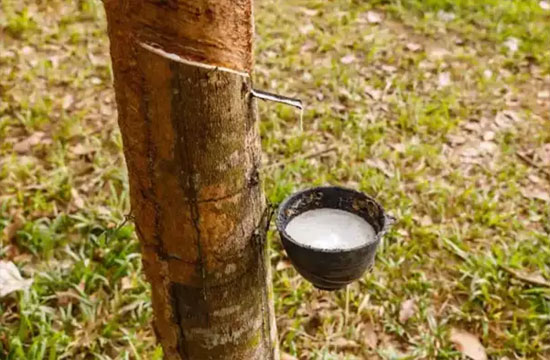Introduction: Influenced by the climate, the release of new rubber output was slow in 2024. At the same time, due to the EUDR policy, major rubber exporting countries reduced their export volume to China, exacerbating the tight spot liquidity in China’s natural rubber market. In July, China’s natural rubber import volume surged, but the spot supply was still insufficient. Where did imported natural rubber flow to? How will the import volume perform in the future?
Natural rubber import volume rose by nearly 40% in July.
According to GACC, the import volume of natural rubber in July 2024 was around 484.1kt, up 39.93% M-O-M but down 4.91% Y-O-Y. The output of new rubber in production areas gradually increased, and the previously delayed resources were successively shipped. At the same time, the quota from alternative plantation flowed in China, supporting the import volume of natural rubber to surge. The total import volume from January to July 2024 was around 2,955kt, down 825kt or 21.82% Y-O-Y, mainly impacted by the slow release of new rubber output overseas, the EUDR policy and the high cost of arbitragers.
Although China’s natural rubber import volume climbed in July, the spot supply was still insufficient, and the spot liquidity of some rubber types was tight. So How was the trade flow of imported natural rubber?
First of all, the import volume of natural rubber was 484.1kt in July, an increase of 138.1kt from the previous month. On the one hand, the import volume from Vietnam rose significantly. In July, 911.1kt of mixed rubber was imported from Vietnam, an increase of 53.5kt of 142.39% from the previous month. On the other hand, the quota from alternative plantation flowed into China. The import volume from Laos and Myanmar in July totaled 95.6kt, up 50kt or 109.65% from the previous month.
The natural rubber imported from Vietnam was mainly deliver previous orders, and the spot liquidity remained tight.
Currently, the spot inventory of Vietnam’s natural rubber remains at a relatively low level, of which the inventory of Vietnam 3L mixed rubber is only 20-30kt, and the inventory of Vietnam 10# rubber is less than 5kt. In July, the natural rubber output mounted up somewhat as the feedstock output grew amid the full rubber tapping work in the overseas production areas. Therefore, the early delayed import orders gradually arrived at China’s ports. However, the arrival volume was still relatively small compared with the volume of natural rubber to be delivered, so these import orders were mainly for delivery. As a result, there was a small amount of liquid supply at the ports of Shanghai and Qingdao, but the inventory in Ningbo’s ports was sparse, and some downstream enterprises were in short supply of natural rubber. In addition, it was heard that the liquidity of some arbitrage resources was locked, and the saleable volume was relatively limited. Therefore, even if the arrival of Vietnam’s mixed rubber in July increased, the tight spot liquidity was not alleviated.
The arrivals of natural rubber at ports went up, and the inventory reduction slowed down.
Since 2024, China’s natural rubber inventory at major ports has continued to decline with the slow increase in foreign natural rubber output. As of the week of August 23, the total inventory of natural rubber sample warehouses in Qingdao was 338.4kt, of which the general trade inventory was 265.5kt, and the inventory in the bonded area was 72.9kt, which was halved compared with the same period last year. In July, China’s total output of all-steel tires in July was 11.3544 million pieces, up 1.76% M-O-M, and the total output of semi-steel tires was 55.303 million pieces, up 4.45% M-O-M. Although the consumption of natural rubber from the tire industry grew with the increase in tire output, the volume of entry in warehouses rose as the arrival of shiploads rallied, which slowed down the decrease in port inventory.
In addition, with the considerable delivery profit of STR20 delivery and the favorable export of China’s tires, the warehouse receipt inventory of natural rubber reached a historical high. Furthermore, with the inflow of quota from alternative plantation, the inventory of non-standard rubber in Yunnan also grew notably.
In conclusion, although China’s natural rubber imports in July went higher, the spot supply was not ample. As for August, the import volume of natural rubber is expected to continue to rise M-O-M, supported by the increase in new rubber output in the seasonal supply growth period and arbitragers’ purchases. However, it may be hard for the import volume to rally Y-O-Y due to the lower-than-expected release of new rubber output and the high import base in the same period last year.






















